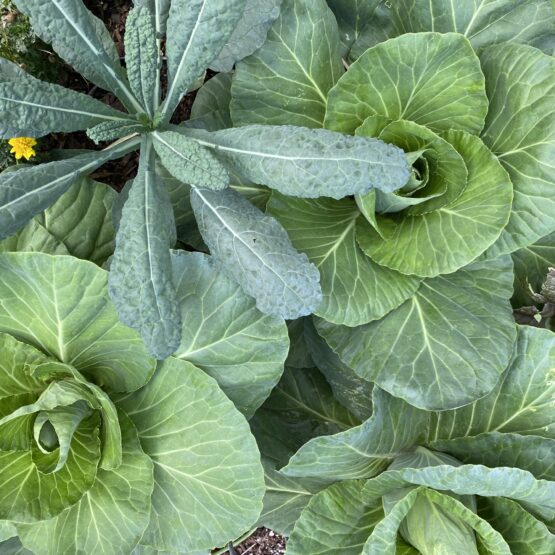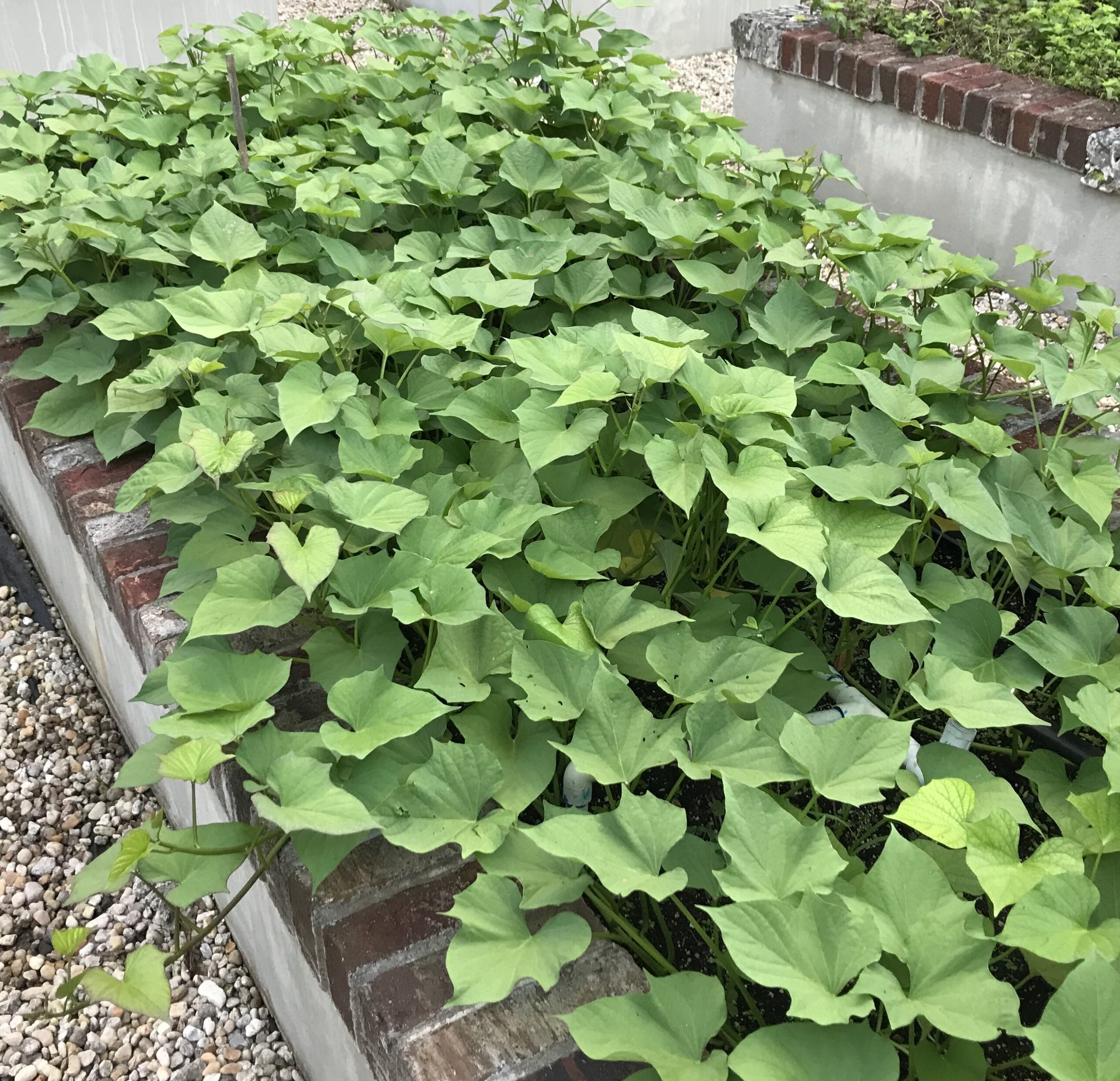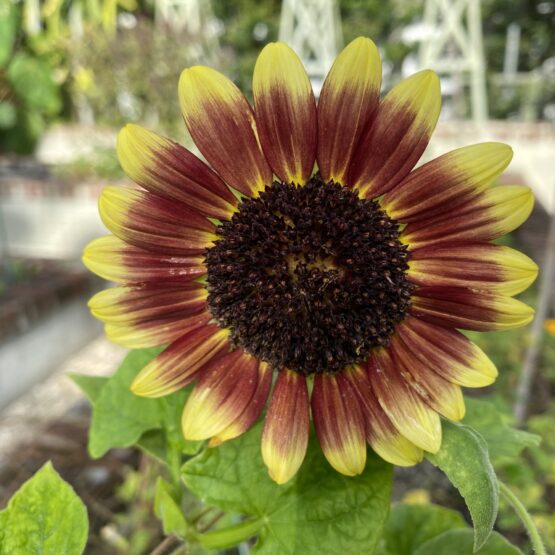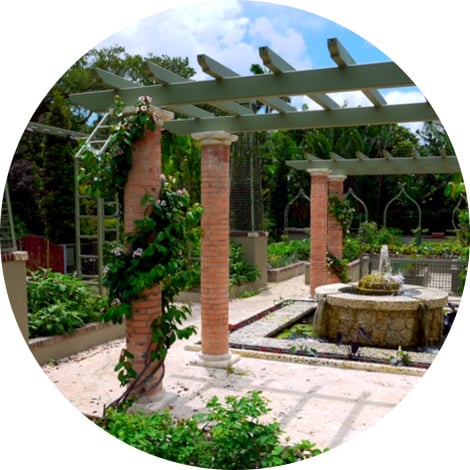![]() I keep talking about “the most exciting time” in our organic garden, from ordering seeds for the new season, to planting our fall crops and seeing those first seedlings sprout up, to the beginning of our harvest – but NOW, it’s just beyond exciting – when our crops are flourishing and there is so much to harvest and cook with that we can barely keep up! So I think I will have to concede – Spring harvest tops them all!
I keep talking about “the most exciting time” in our organic garden, from ordering seeds for the new season, to planting our fall crops and seeing those first seedlings sprout up, to the beginning of our harvest – but NOW, it’s just beyond exciting – when our crops are flourishing and there is so much to harvest and cook with that we can barely keep up! So I think I will have to concede – Spring harvest tops them all!
The “fruits” of our labor in the fall-winter months are now ripe and ready, as you will see in our photo gallery and descriptions below. Enjoy!
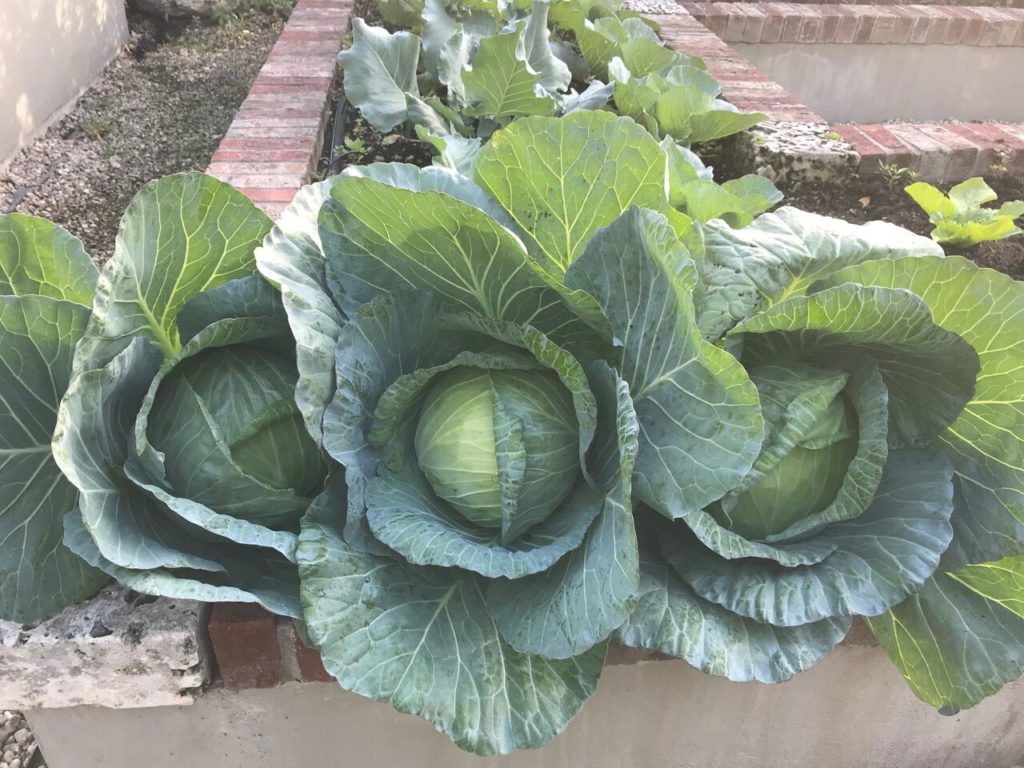
THREE HEADS OF CABBAGE ARE BETTER THAN ONE – PLENTY TO SHARE!
This is one of the “regular” cabbage varieties that we grow. Seedlings were bought from a local store, which we rarely do. But with the fall storms and our late start, we decided to put a few of these in the garden earlier than our seedlings would be ready, and they really took off. Nice, dense and firm heads – excellent in any cooked cabbage dish or for coleslaw. We made a beautiful slaw with this, adding shredded carrots and following a “Tidewater Coleslaw” recipe (making much less dressing than called for) – our go-to slaw recipe, very basic and delish!
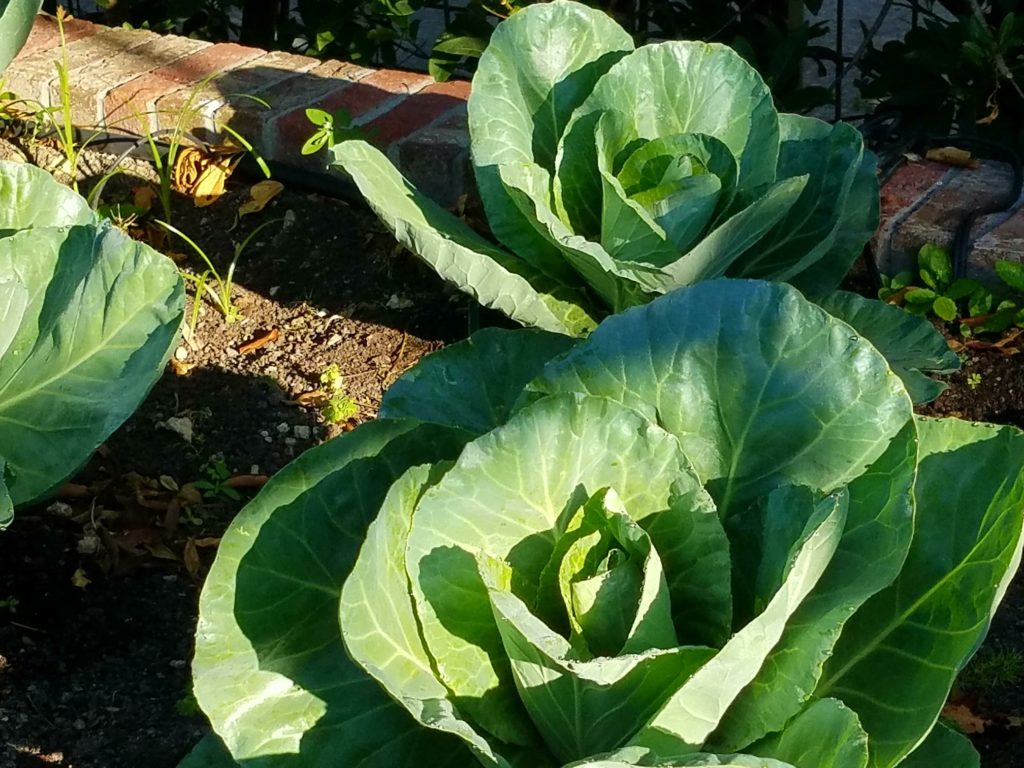
“POINTY-HEAD CABBAGE” aka “CONEHEAD” or “COUR DI BUE” CABBAGE
This is definitely one of the favorite crops in our garden, possibly as much for their beautiful, unusual look (when they form that well defined “conehead”) as for their taste – they are sweet and tender, yet firm, and can be used equally in cooked or raw recipes calling for regular cabbage. They’re almost ready now – can’t wait!
This particular crop that’s pictured above came from Johnny’s Selected Seeds and they’re called Caraflex F1 Organic, Hybrid Fresh Market Green Cabbage. We’ve actually started another set of seedlings that were transplanted into beds yesterday; they mature more rapidly (68 days) than regular cabbage so we thought we’d take a shot at having a late Spring crop. If it’s not too unseasonably warm, we may pull it off.

RIPE TOMATOES
I suppose a whole lot doesn’t need to be said about tomatoes – as they speak beautifully for themselves. This is truly one of the most exciting parts of Spring harvest, watching the tomatoes finally come to maturity after a very long wait. These plants went in as mature seedlings in late October-early November and are now finally bearing ripe fruit. The varieties here are Genuwine and Cherokee Purple. Aren’t they gorgeous? And very sweet. It’s just thrilling to have homegrown, ripe organic tomatoes!
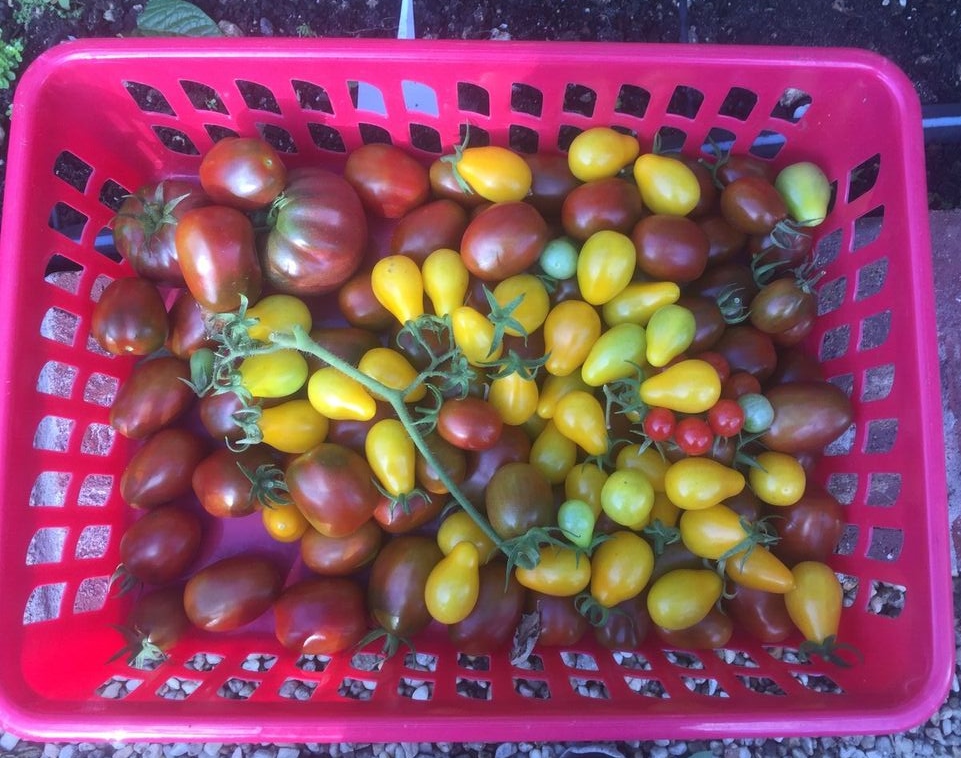
CHERRY & HEIRLOOM TOMATOES
So we have a little assortment here of tomatoes – some cherries as well as some heirloom tomatoes. There are yellow pear tomatoes as well as a few of the tiny Everglades cherry tomatoes (everyone’s favorite in the garden – “They taste like candy” is our motto!). When we pick the tiny cherries, we clip whole stems at a time to avoid the tomatoes splitting. The oblong shaped tomato is a “black plum,” fairly soft in nature and excellent for cooking with. We are so lucky this time of year with our abundance of tomatoes.
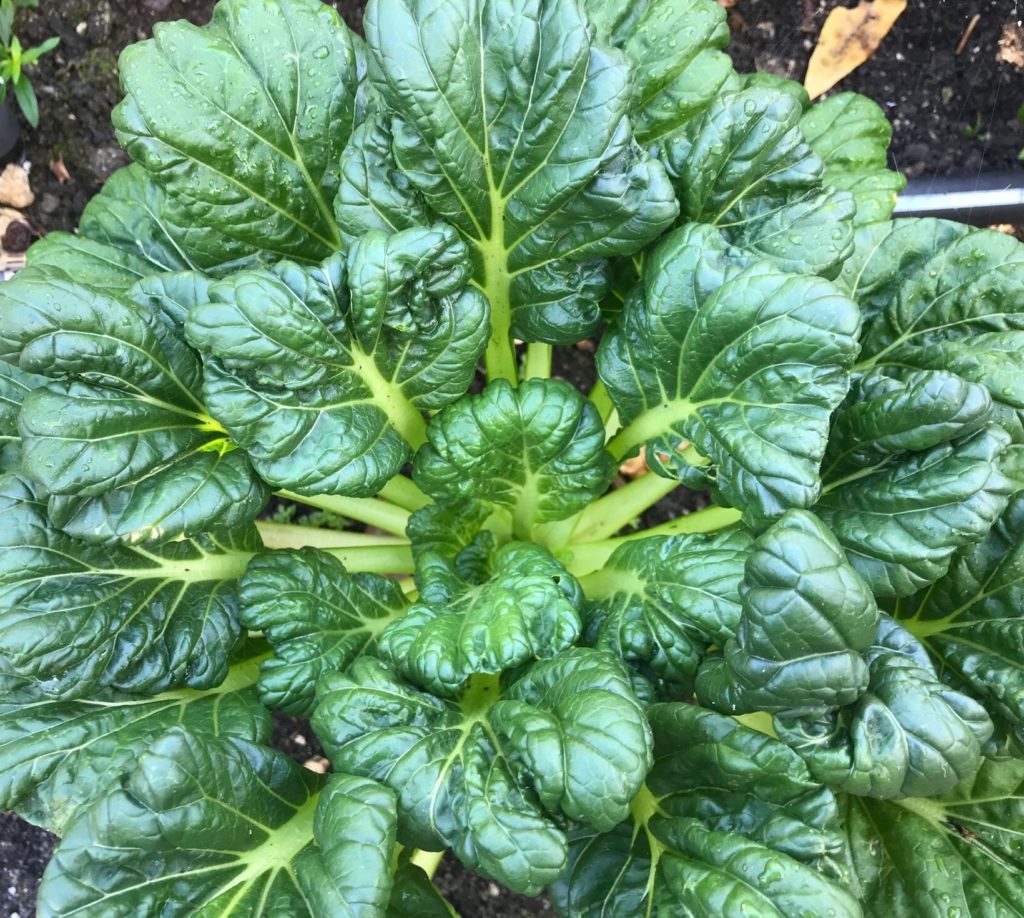
TATSOI (ASIAN “SPINACH”)
Tatsoi is one of our more popular Spring harvest crops because it can be used as a substitute for spinach – and we can’t seem to grow just plain ol’ regular spinach organically here in South Florida. Tatsoi is actually one of many choys that grow well here. One of our members loves to make a spinach-sorrel soup (see sorrel below) using this mild, tender leafed vegetable. They form really nice “loose leaf” heads; we can either cut off the larger leaves as they grow or harvest a whole plant at a time. I love mixing it with other greens or with store-bought spinach to enhance a dish. It does cook down a lot, the way spinach does, so we try to grow a lot of it at one time.
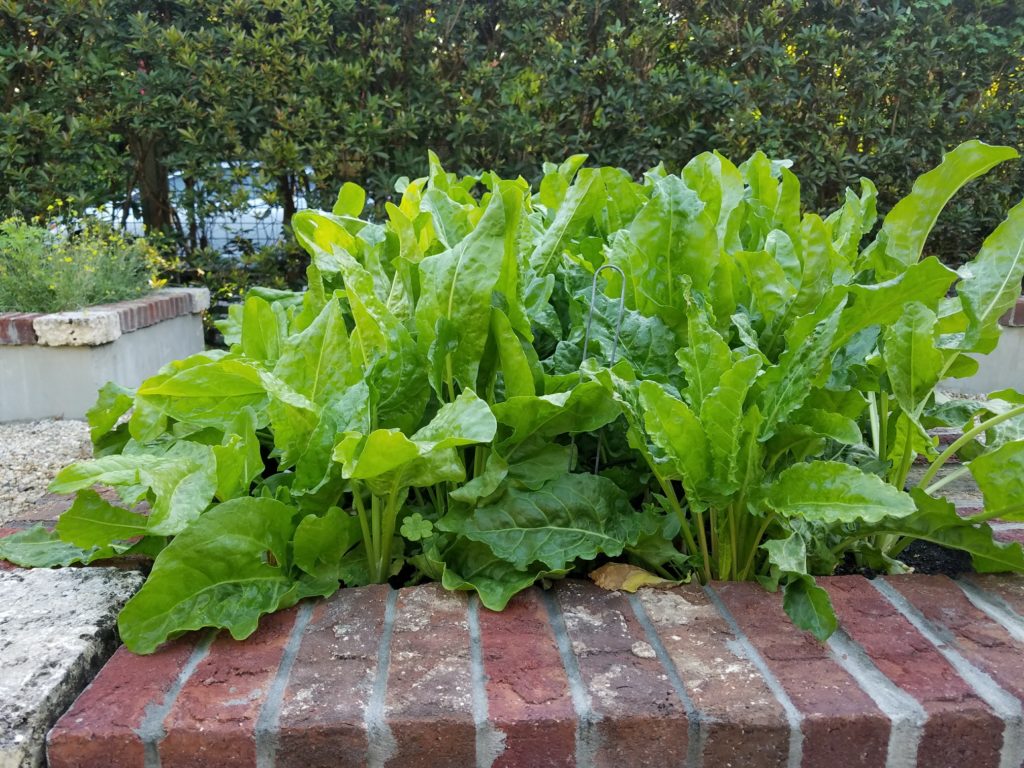
FRENCH SORREL
Finally! We used to have a full flourishing bed of sorrel, years ago, and up until now have not been able to replicate it. Maybe there’s something magical about this bed, the same one where we first had the crop so plentiful. Wanna know what’s so amazing and wonderful about sorrel? Its distinct lemony taste. I love seeing the look of surprise on people’s faces when they first try it. Our garden members mainly use it in soups – sorrel vichyssoise and spinach-sorrel soup being two favorites. It also makes a great sauce for fish or assorted vegetable fritters. Some of us also tear a few raw leaves to perk up a raw salad. We’re hoping the magic of this bed continues and carries this crop through the heat of the summer – it did it once before!
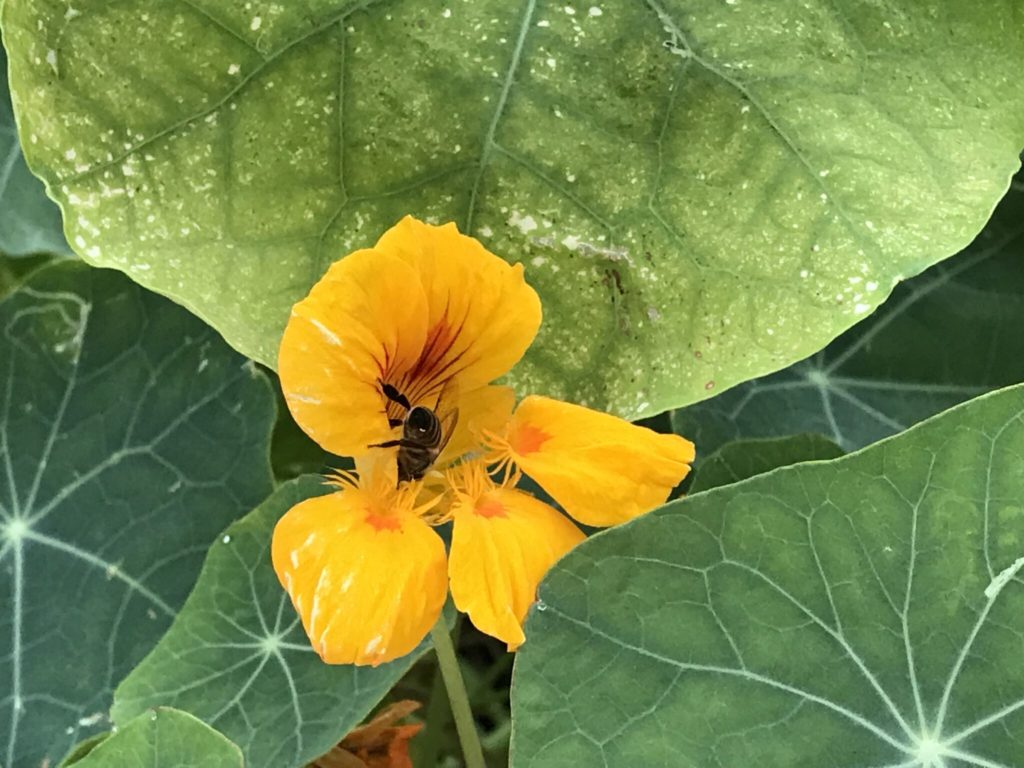
NASTURTIUM & FRIEND
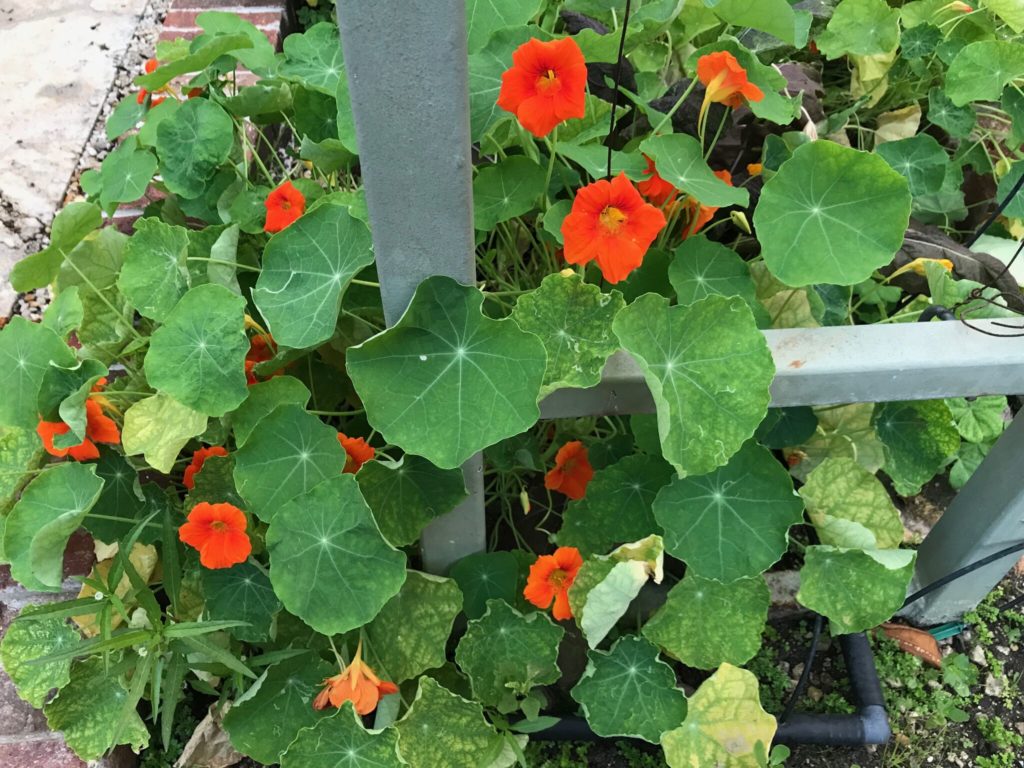
BRIGHT ORANGE NASTURTIUMS
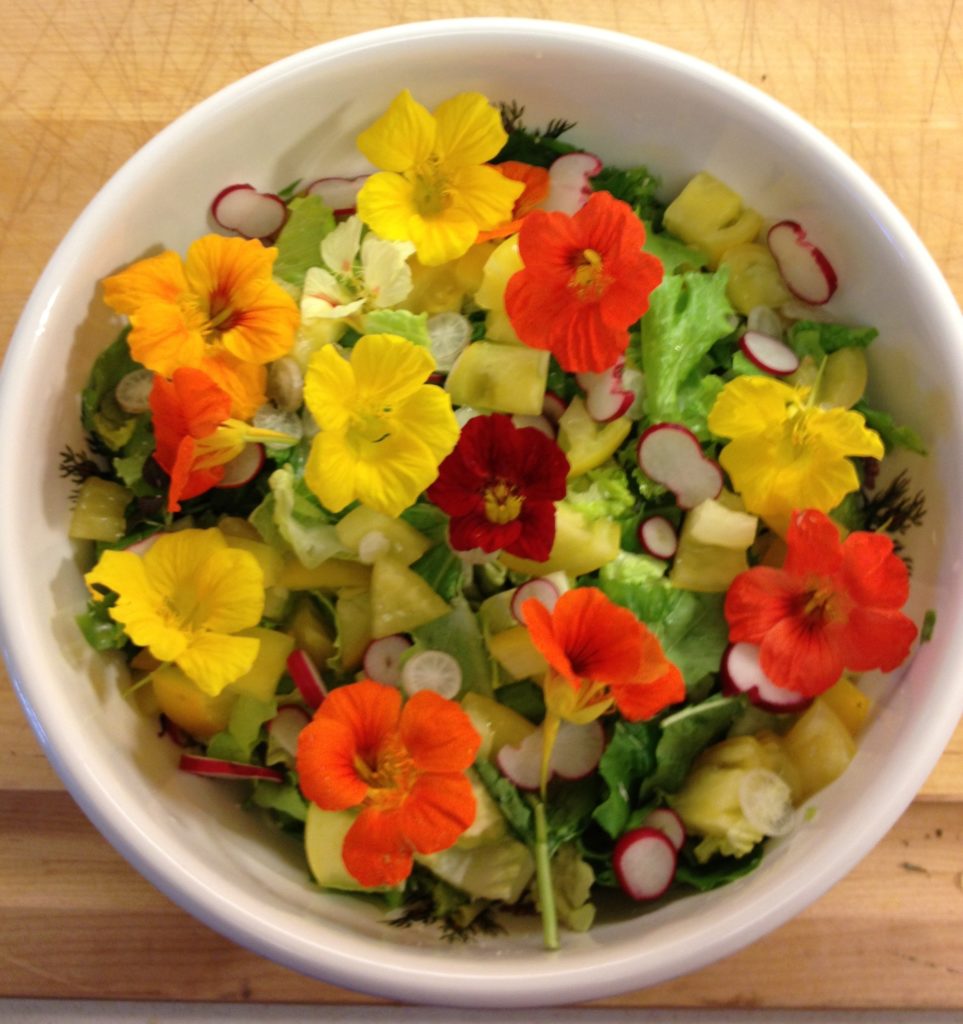
NASTURTIUMS IN SALAD
What I said about the sorrel, I’ll say about the nasturtiums: FINALLY! Years ago we had such a bountiful crop of these edible flowers in the garden, that it won the title: “Year of the Nasturtium.” We had them everywhere in the garden! But since then, we have not been able to get seeds to germinate – yes, I’ve tried soaking them, and I’ve tried clipping them before planting, and using different soil mixtures, and buying from different seed companies, etc. Alas, a lot of money has been wasted on seeds.
So this year my husband came across some nasturtium seedlings at our new favorite nursery out in Davie, Tree Amigos. We were quite thrilled to find these, and as you can see, they are beautiful, thriving and blooming plants now. Just six seedlings have grown to fill out a whole bed and are trying to run beyond it. These two – the yellow and bright orange – have a spicier taste than nasturtiums we have grown in the past. They are certainly a very welcome addition to our Spring harvest, and are just loaded with buds so we’ll be enjoying them for a while. Our favorite use is to add them to salads, as you can see above.
We will be asking our friends at Tree Amigos how they were able to get the seedlings started. They are very knowledgeable and helpful, always willing to take the time to share their information and techniques. True “amigos”!
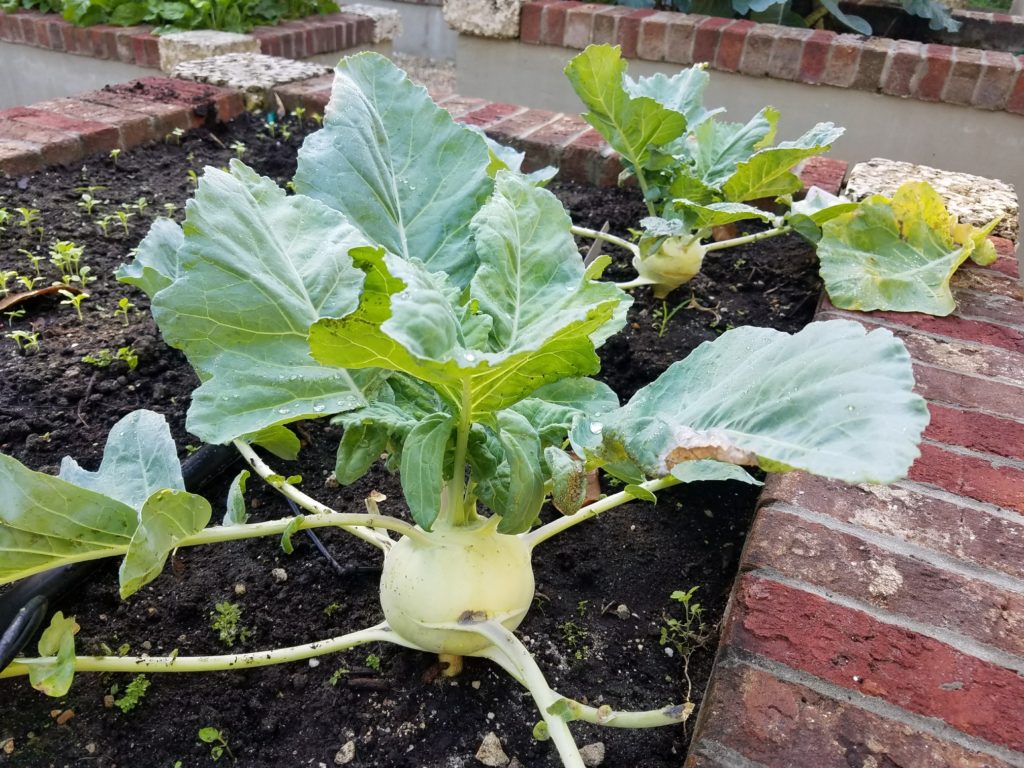
KOHLRABI
Well last, but certainly not least in popularity, is this cabbage family plant: kohlrabi. We have grown both purple kohlrabi and white, and now stick to just the white ones as they tend to grow bigger and healthier for us (and both are white on the inside anyway!). Kohlrabi grows really well in our South Florida climate; we can grow multiple crops to harvest between late January and early May. The biggest issue we have with it is when warm weather (yes, February included, darn!) brings aphids along with it that attack the underside of the leaves. For this, we make up a diluted neem oil spray for the leaves and that usually takes care of it.
Kohlrabi has an unusual taste and texture – it is crunchy and earthy tasting. We just peel off the white skin of the “fruit” and slice, chop or grate the vegetable. We highly prefer it raw, added to a salad – though it can be cooked usually by sauteing or steaming (in my opinion it loses a lot of its flavor when cooked). You can find recipes for delicious raw kohlrabi slaws (best to squeeze out some water once it’s grated). Or you can just sit down and eat it raw with a little salt, or with nothing at all – it’s so yummy! And BTW – you can also eat the leaves, they are much like cabbage or collard leaves; we cook them up with other hardy greens.
So that’s the beginning of our Spring harvest story – we have lots more to tell and will in the near future. Stay tuned!
Photos by LG, CG & DK
